1.Monstera Deliciosa
These ‘Swiss cheese’ plants are currently among the most popular indoor plants. Their large, glossy, heart-shaped leaves are filled with many naturally formed holes making them look awesome and unique.

Monstera Deliciosa plants prefer warm conditions, a humid environment, regular leaf cleaning, and moderate watering. Usually, they like to be watered once every week or when the top 2 inches of soil become dry. A big room with bright, indirect sunlight is the perfect place for Monstera Deliciosa plants. Also, it’s worth mentioning that they are climbing plants, so it’s best to provide them with a support made of wood or other natural materials.
2. Peace Lily
If you are eager to create a healthier environment and want to purify your home, you should definitely add a Peace Lily to your wish list. These blooming ornamental houseplants are very popular due to their remarkable ability to clean the air from their surroundings.

They thrive in average warm indoor temperatures, prefer humid conditions, and to be placed in a spot where they can receive partial shade. These plants can be placed close to north or west-facing window, but some Peace Lily growers say that these plants can even tolerate rooms without windows. There is no need to worry about watering them often, as they will let you know when they are thirsty by drooping and bending. To be safe, you can keep their soil damp by watering them once or twice a week.
3. Kentia Palm
These tropical ornamental plants they are pretty adaptable to indoor conditions that many other houseplants cannot withstand.

These palms do well in low to moderate sunlight intensity, but they will also thrive in rooms where they only get indirect light. Although they can tolerate extreme temperatures, it is better to keep them away from excessive heat during the warm seasons. Watering them when the soil has dried out (about one inch deep) and occasionally misting them will maintain your Kentia palms happy and healthy.
4. Cacti
There are two popular large groups grown as indoor houseplants — desert and forest cacti, both requiring very little attention. If proper conditions are provided, they can produce little flowers of different colors.
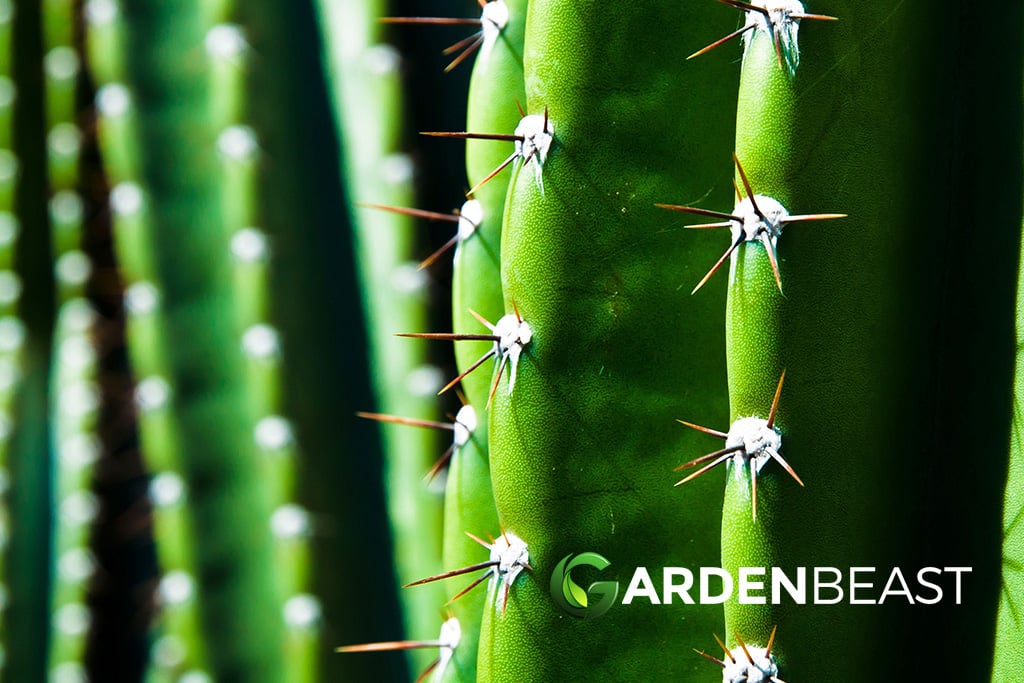
Depending on their native habitat, each of these cacti demands special care. Desert cacti will benefit from bright and direct light, watering when the soil begins to dry, and hot and dry conditions.
Forest cacti, on the other hand, will enjoy less sunlight, watering as for a normal houseplant, but not in excess, and warm temperatures during the growing season. It is all about the details. But keep in mind that all cacti should be planted in a well-draining cacti soil mix.
5. Zanzibar Gem
Zanzibar Gem is the ideal low-maintenance houseplant. It’s perfect for every beginner gardener and as a project for children as it requires little to no commitment. You do not even need to worry if you forget to water this plant because it has an amazing survival technique.
Its rhizome will help it store water for later use. If you water it generously once every week or two, your plant will be more than satisfied and it will not mind occasional neglect.

Zanzibar Gem plants thrive in average household temperatures and normal humidity levels. Although they prefer bright to medium indirect sunlight, these plants can also tolerate low or fluorescent light. If you keep the leaves clean, you will help the plant fondle in more light.
6. Anthurium
Anthurium plants have some of the longest-lasting heart-shaped flowers on earth, which makes them very popular ornamental houseplants. They are easy to grow and will bring a dash of color into your home.

These plants need as much bright, indirect light as you can provide them with, but they will survive in full shade as well. However, they’ll grow and bloom slower without proper lighting conditions. A warm and very humid environment will bring out the best of an Anthurium as long as they also receive enough water. You should always check the soil at about 1-2 inches deep before watering, as over-watering can result in yellow leaves.
7. Rubber Plant
Generally, most Rubber plant growers preferred to trim these plants and keep them medium-sized, but they can reach up to 50 feet in height. The choice is yours!
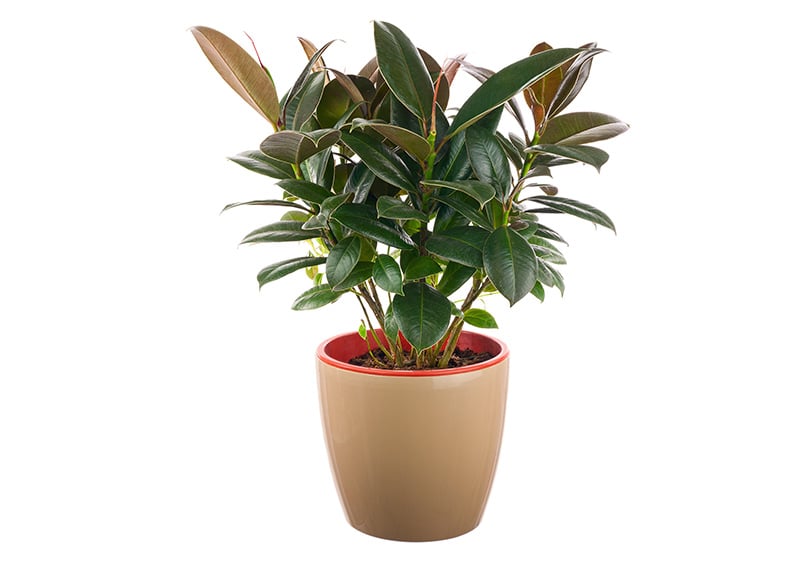
The ideal place for them to grow happy and healthy would be near a window with sheer curtains, as they love warm temperatures and bright, indirect sunlight. Water your rubber plants once or twice a month and they will be just fine. However, during the growing season (in summer), their soil should be kept damp. Mist them whenever you notice that the air is too dry.
8. Aloe
The Aloe Vera plants have been grown by people, both indoors and outdoors, for thousands of years due to their well-known usage in traditional medicine. Also, they are very forgiving to busy or forgetful owners.
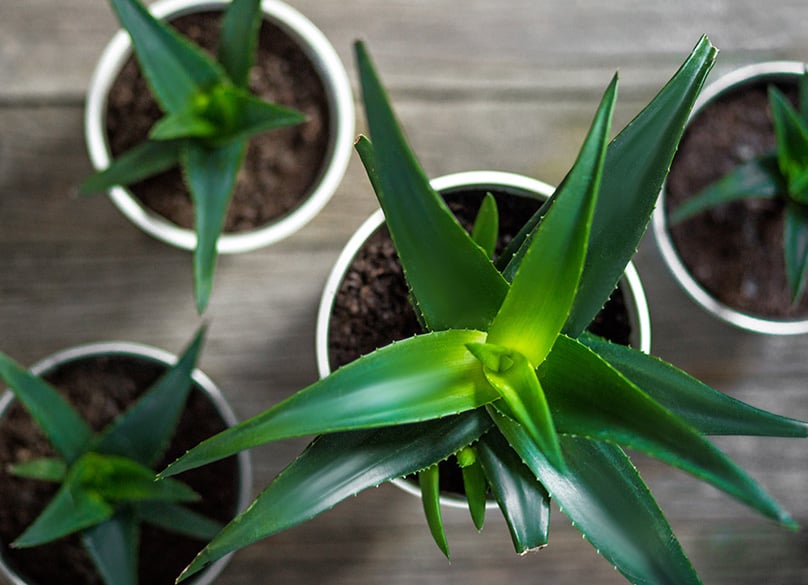
Choose a bright, sunny spot that keeps your Aloe plants out of direct sunlight. Like all succulents, they thrive in dry conditions, so you should not leave them in moist soil. Wait for the soil to dry out and water them thoroughly once every two weeks and make sure you plant them in a well-draining succulent soil mix.
9. Coffee Plant
If your house is small and you don’t have enough room for an indoor garden, but you love plants, Coffee plants are a suitable choice. If you can simulate their natural habitat conditions, they will be comfortable enough to produce small white flowers and bear fruit.

They like bright, indirect light, so the safest place for them would be near a window. Also, warm temperatures, high levels of humidity, well-draining soil, and regular watering will keep your Coffee plants happy.
10. String of Pearls
The String of Pearls plant (Senecio Rowleyanus) are cascading succulents that store a large amount of water in their leaves, making them very easy to grow indoors. During the summer, they develop white, trumpet-shaped blooms that smell like cinnamon.

These plants thrive in warm to hot conditions and they enjoy a sunny area near the south or west-facing windows. They are drought-tolerant, so infrequent watering will not affect their overall health. However, if you notice that their pea-shaped leaves start to look dehydrated; do not hesitate to water them.
11. Croton
Their leaves are hypnotic, but you should avoid touching them, as they are completely poisonous. If you want to grow them indoors, it’s best to provide them with a lot of light. Without proper sunlight, their colors will fade away.

Croton plants crave for natural tropical environment. Keep your plant happy in warm and humid conditions and always check the soil’s moisture before watering it again. Both over-watering and under-watering can affect your plant’s health, so you need a soil that is dry on top.
12. Sweetheart Hoya
Sweetheart Hoya is a low-maintenance indoor succulent that has green, heart-shaped leaves. During the summer, they bloom sporadically, displaying clusters of fragrant, white, and burgundy flowers.

Although Sweetheart Hoya plants can tolerate shady areas, they will benefit more from bright and indirect light. These plants are happy when you are, so they will grow just fine in average room temperatures. Also, due to their succulent leaves, you can water them once or twice every month when the soil seems dried out. Feed your Sweetheart plant a light fertilizer twice a year to encourage growth.
13. Snake Plants
Snake Plant, also known as Mother-In-Law’s Tongue, is another popular species of ornamental houseplants. Their green-banded and yellow-bordered leaves make a distinguished apparition in every room and they are frequently used for air purification and people with “sick building syndrome”.
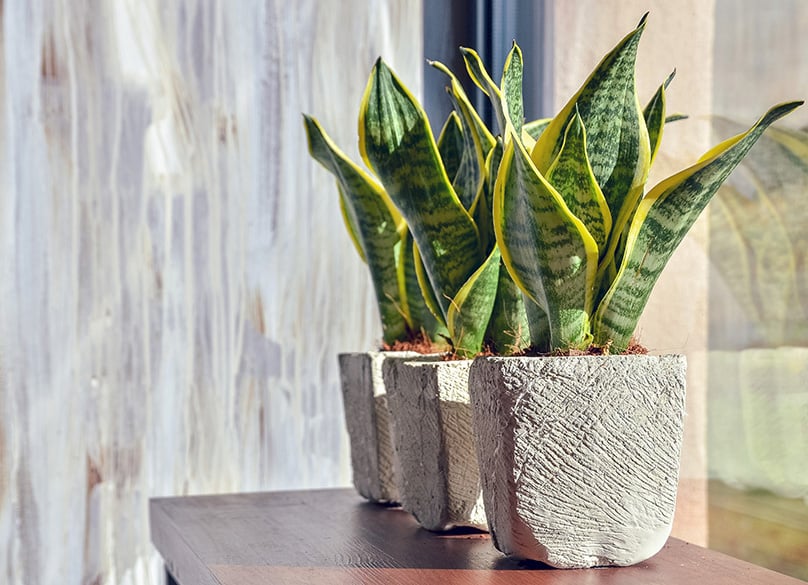
These plants are perfect for gardening beginners, as they can adapt not only to intense sunlight but also shady corners. Allow the soil to dry out before the next watering, as too much water can irreversibly damage the plant. Snake plants prefer warm temperatures between 70 and 90 °F (21-32 °C), but they can tolerate any value that is above 50 °F (10 °C).
14. Begonia
If you want to spruce up your home with a flowering houseplant, Begonias are a perfect option. These plants will develop some mesmerizing blooms that will look amazing in combination with their asymmetrical, patterned foliage if they are loved and cared for.

Depending on the species, they benefit from a sunny or shaded spot when planted in indoor containers. However, if you live in a region where the summer days are very hot, you should place your Begonias near a window with afternoon shade. They prefer damp conditions, so a well-draining potting mix would be a suitable choice. Make sure you water your Begonias at the base when the soil is slightly dry to avoid fungal diseases or leaf damage.
15. Air Plants
These plants are pretty different to grow than most indoor plants, as they do not require any soil at all. Besides, their leaves are shaped like the slender tentacles of a sea creature or an alien, making them truly peculiar. There are various species of air plants, having silver or green foliage and different tolerance to environmental conditions.

Air plants are mostly grown in terrariums and placed in rooms with south or east-facing windows to provide them with enough bright, indirect light. They prefer warm temperatures and high humidity levels, as it can help your plants to absorb more nutrients. When the watering time has come, you need to put them in a container with enough water for about 30-35 minutes. Turn them upside down on a towel and replace them in the terrarium once they are dry.
16. Lipstick Plant
Lipstick plants are popular ornamental houseplant due to their glossy foliage and red, fragrant flowers. Their name refers to their blooming buds that rise from dark-colored tubes, looking like tiny lipsticks. They will bring a lovely dash of color to any indoor landscape without demanding extra care from their owners.
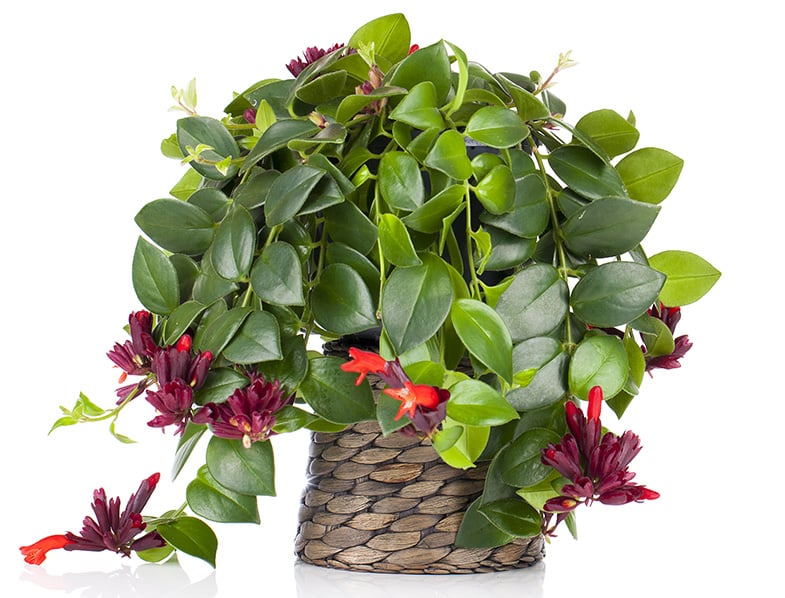
These plants can tolerate medium to bright light, but they will bloom better if you keep them in indirect sunlight. They prefer their soil to be constantly damp without over-watering them, as this will result in root rot. Also, to produce a lot of flowers, you should feed Lipstick plants with an all-purpose houseplant fertilizer once every month in spring and summer.
17. Pilea Peperomioides
Pilea plants are very easy to grow, making them an excellent choice for any type of gardener. Plus! They spread all over the world fast because they are very easy to propagate.

Pilea plants have succulent-like features so they will not mind if you forget about them once in a while. Water these plants once a week, place them in a location with bright, indirect light, and feed them regularly with cacti based fertilizer to ensure the best growth. Keep in mind that they also need well-draining soil to stay healthy.
18. Jade Plants
Traditionally, Jade plants were considered a source of good luck for their owners and they are still a popular gift worldwide. These succulents are perfect for busy people or travelers who can’t water and care for their plants regularly.

Jade plants prefer bright and indirect light when they are young, but they will thrive in direct sunlight once they reach maturity. Their soil must be well-draining and damp as long as it does not get soggy. Like all succulents, they will grow well in cacti and succulent soil mix.
19. Spider Plant
Spider plants are usually grown as hanging indoor houseplants as they need plenty of space to exhibit their exotic foliage. They are hardy plants that can survive in almost any environmental conditions and will produce gorgeous white flowers when mature.
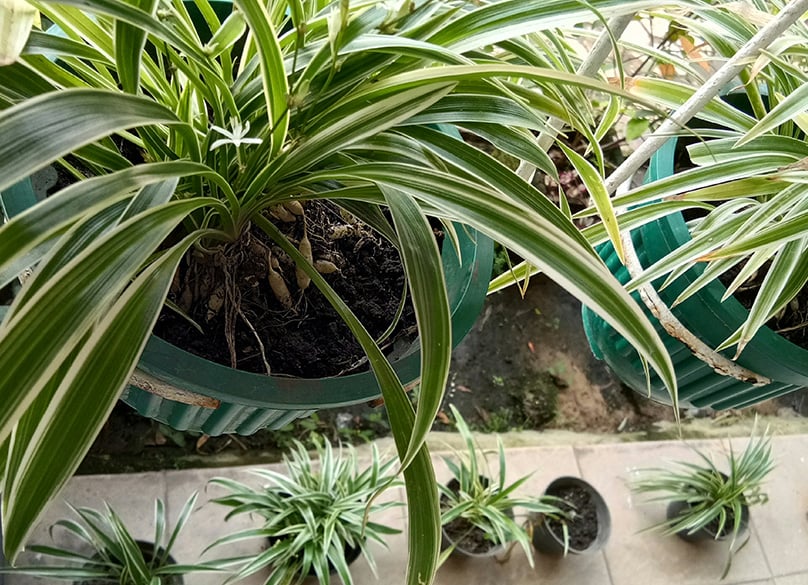
Although these plants are tolerant of mostly everything, they will thrive in bright, but indirect sunlight. Spider plants need a fast-draining potting soil, regular watering, and occasionally misting to maintain the ideal levels of moisture until winter. During the summer, they will benefit from weekly feeding with liquid fertilizer or pellets.
20. Red Prayer Plant
These plants are truly special. During the day, their leaves stay completely flat, and at night they fold like praying hands. Moreover, their pleasant-looking foliage is a colorful mix of green, red, and yellow.
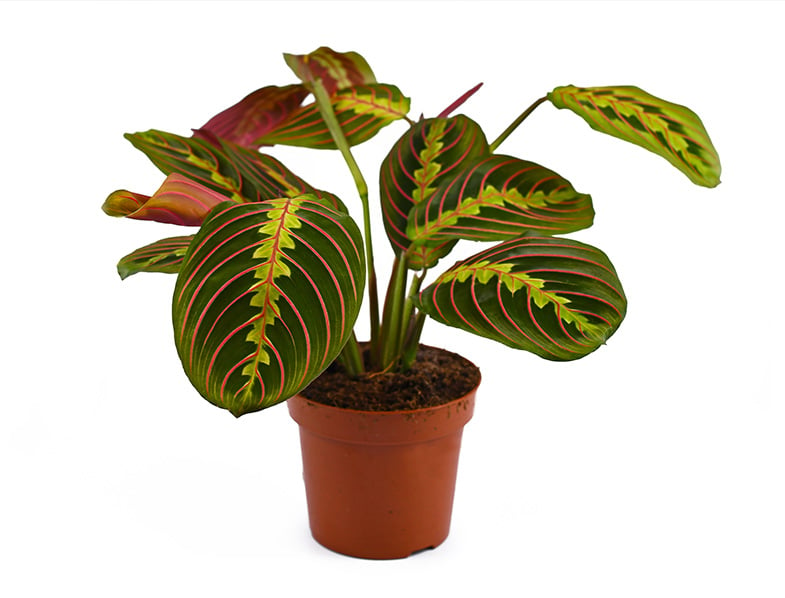
Red Prayer plants are dwarf species that love growing near a window where they can receive enough bright, indirect light. They will benefit from a well-draining soil that is rich in organic matter. Make sure you water them frequently, as they will not appreciate a dried-out soil. If you want your plant to grow faster, you can fertilize it once every two weeks throughout the growing season (from spring to autumn).
21. Haworthia
Do you have a tiny empty spot in your home that would be perfect for a beautiful houseplant? Haworthia plants might be the ideal solution, as they generally grow between 3 and 5 inches (7.6-12.7 cm) only. They will spruce up your home and compliment your interior decor with their succulent rosettes that are covered in pearly warts.
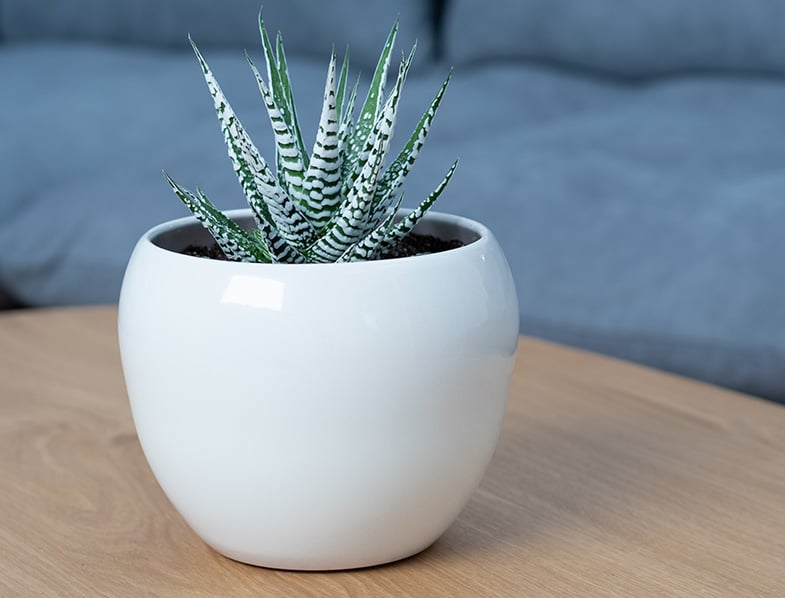
These plants are pretty easy to grow, especially if you are already used to species like aloe or echeveria. Like all succulents, Haworthias will benefit from bright sunlight, regular moisture during the summer, and a fast-draining or cactus potting mix. They do not need frequent watering, as they store enough water into their fleshy leaves.
22. Ficus Bonsai Tree
Ficus Bonsai trees have no special demands, but they will need regular pruning to maintain a fresh and tidy look.

These trees do well when they are exposed to full sun and generously watered when the soil starts to dry. Do not worry about the watering frequency, as they can tolerate occasional under-watering and over-watering. In summer, they require weekly feeding with organic liquid fertilizer, then you can reduce it during the winter.
23. Lucky Bamboo
Although it is a very popular houseplant in India, China, and Taiwan, Lucky Bamboo can be found and grown pretty much anywhere. These plants play a big part in the feng shui culture, bringing good luck and fortune. They are preferred by gardeners and houseplant enthusiasts due to their nearly indestructible nature.
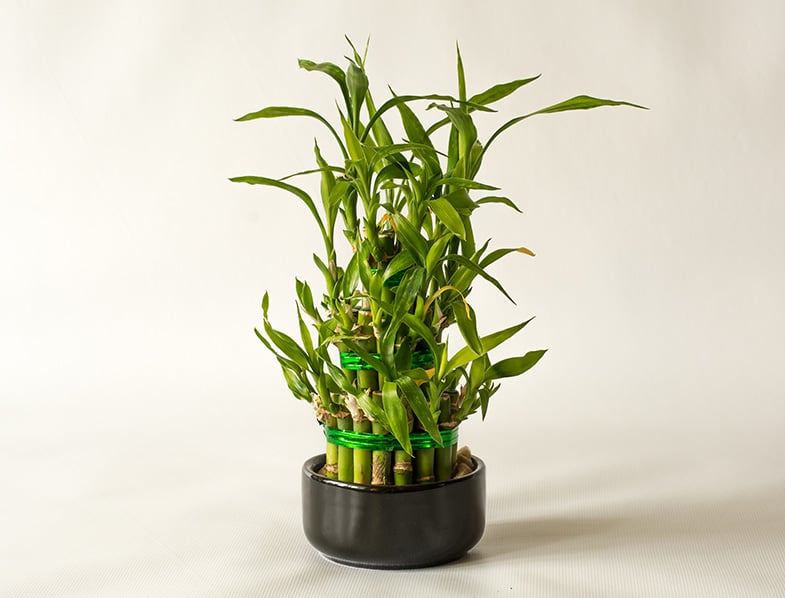
Keep your Lucky Bamboo in a location with bright and filtered sunlight. When it comes to watering, these plants will need no potting soil, as they can grow only in water. Keep them in a simple vase filled with pebbles to ensure the best support and change their water weekly. They are pretty sensitive to chemicals from tap water, so it might be better to use distilled or bottled water.
24. Lavender
Lavender plants have gained their popularity due to their highly fragrant properties. Their bloomings keep their aromatic fragrance even when they dry out. Besides their stress-relieving attribute, lavender flowers are edible and serve well as a seasoning for stews, salads, and soups.

These plants love full sun exposure. They are extremely tolerant of drought, but they need regular watering until they get used to a new environment. Like all essential oil plants, lavender plants thrive in poor, well-draining soil. Add a layer of compost when planting lavender and keep the plant away from fertilizers and organic matter.
25. Dragon Tree
The Dragon Tree is an attractive plant with shiny, arching, and red-edged leaves. If you plan to grow them indoors you can prune them and keep them around 6 feet (1.8 m) or less. They are very easy to grow and care for, so they make excellent companions for beginner gardeners.
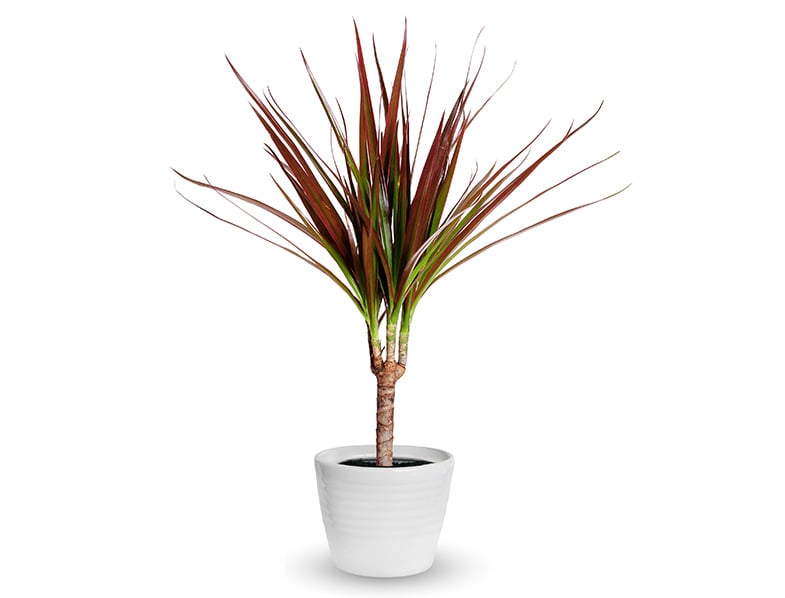
These plants thrive in bright light, so make sure you place them near an east or west-facing window. If you can’t provide them with enough light, they will probably grow slower and produce smaller, less intense-colored foliage. Dragon trees prefer loamy, well-draining soil. They require watering once every three weeks or when the half-top layer of soil has dried out.
26. Calathea
Calathea species are known for their unique striking foliage. They are commonly referred to as Zebra plants, Rattlesnake plants, or Peacock plants because of their bold markings.

Their growing environment should consist of a well-draining potting soil that retains water. During the spring and summer, try to maintain the soil constantly damp and reduce watering when the winter settles in. If you want your Calathea plant to be in top shape, it is best to place it in a spot with dappled light or part shade and high humidity.
27. Kalanchoe
Kalanchoe plants are popular succulents that can produce white, red, yellow, or pink flowers. They will bloom if you provide them with proper light and can be encouraged to produce flowers even in the winter. Moreover, you can propagate these plants through tiny plantlets by planting them in individual pots. You can also offer them as gifts to friends.

Their demands are pretty basic. During their growing season, a sunny place will encourage these plants to bloom sporadically. It’s best to water them regularly during the summer, but you should reduce watering in early winter. Keep in mind that the soil must be dry to the touch in-between waterings. For optimal growth, plant your Kalanchoe in ordinary potting soil and feed it with liquid fertilizer twice a week in the summer.
28. Phalaenopsis Orchid
Orchids are probably one of the most common gifts around the world and we are not surprised. Gardeners all over the world love these plants as they are very elegant and they produce colorful flowers. They bloom from spring to summer and their blossoms are white or various shades of pink, yellow, and lavender.

Good light is required for Orchids to grow healthy and happy, but they can also do well in low-light conditions or under artificial light. In their natural habitat, these plants grow on trees, so they need a potting material that simulates a host like redwood bark chips, ground fir tree bark, or Monterey pine bark chips. During the growing season, water your Orchid once a week. Make sure you rotate your plant once in a while to ensure equal growth.
29. Yucca
Although Yuccas are eclipsed by the similar species of the Dracaena genus, they are friendly plants that can be grown among many companions. These plants are drought-tolerant, so they pair well with cacti, succulents, sage, tiger lilies, and others.

They are not difficult to grow as long as you provide them with full sunlight, a sandy and well-draining soil, and regular feeding during the growing season. Yuccas are highly sensitive to soggy conditions and will appreciate if you allow their soil to dry out between waterings. Remember: the only way to kill a Yucca is to over-water it.
30. Gardenia
Gardenias are large tropical flowering plants grown mostly for their lovely-scented and white-cream flowers. These plants do well in greenhouses or conservatories, as these environments will provide them with proper humidity levels.
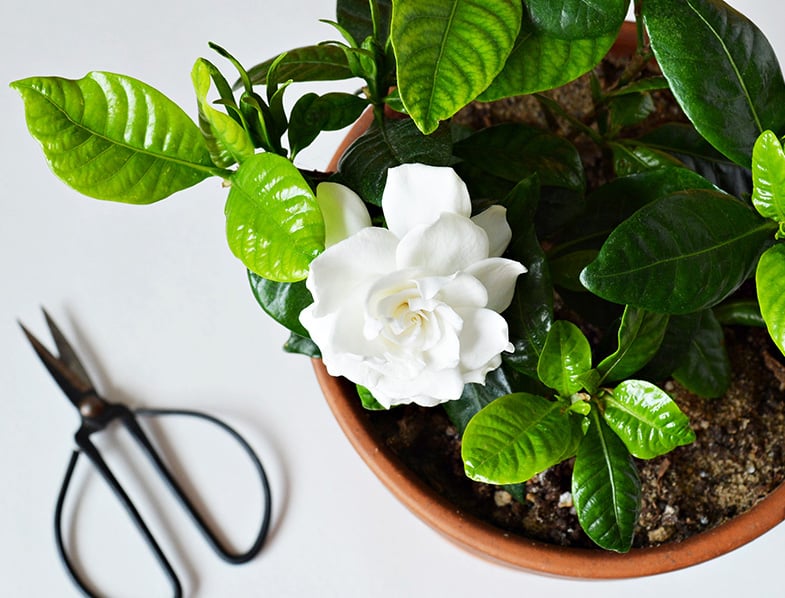
They grow healthy and happy in a well-draining soil that is rich in organic matter. If you grow Gardenias in bright and indirect light, feed them twice a week with non-alkaline fertilizer, and maintain their soil constantly damp in the summer. These beautiful plants will make great companions for a long time